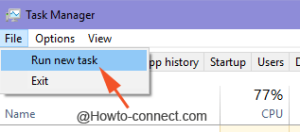
Missing, outdated, or corrupt audio drivers.However, after researching why people face this problem, we were able to sort out some common causes. Pinpointing one specific reason for the audio output device not working isn’t easy.
#WINDOWS VOLUME MANAGER MISSING HOW TO#
Read Also: How To Fix USB Ports Not Working Issue in Windows PC Reasons For No Audio Devices Are Installed Windows 10, error This troubleshooting guide will explain the best ways to fix no audio output device installed in Windows 10. With that being said, if you have run into an error that says, No Audio Output Device is installed. And imaging life without music, & melodies isn’t a pleasant sight. When you see a Red Cross sign next to the audio icon in the system tray, you know you cannot listen to any sound on your computer. Here we will discuss the best ways to resolve no audio devices installed.
#WINDOWS VOLUME MANAGER MISSING FOR WINDOWS 10#
Side note: The description given above is for Windows 10 Version 1607, but should also help in other Windows version.Wondering h ow to Fix no Audio Output Device is Installed? Don’t bother because you’ve landed on the right page. The registry values will be re-created automatically. Delete the values IconStreams and PastIconStreams (if they are are present) via context menu.Ĭlose registry editor and reboot Windows. \Software\Classes\Local Settings\Software\Microsoft\Windows\CurrentVersion\ģ. Navigate in the left pane to key HKEY_CURRENT_USER to the following sub key: Fire up registry editor regedit.exe (can be done with standard user rights).Ģ. If the fixes provided above doesn't help, try the following steps to check your registry settings.ġ. Then log off and log on again and check whether the volume control icon is back. Ignore the message that changes are going active after next login and move the slider back to 100 %. Drag the slider Change the size of text, apps and other items …. In Settings app click System and select Display within the next page.ģ. Click in Taskbar to Start and select the Settings icon in start menu.Ģ. A users proposed the following steps to repair the missing volume control icon issue.ġ. I found another hint in Microsoft Answers-Forum within this thread. If no tabs are shown, click More details in lower left corner of the task manager. Then click the Restart button in task manager window.

Launch task manager (via taskbar's context menu), go to Processes tab and select Windows-Explorer. Tip: If the volume control icon is missing after each restart, you can try the following fast workaround. You can also try to check Windows for damaged files (see Check and repair Windows system files and component store).


 0 kommentar(er)
0 kommentar(er)
